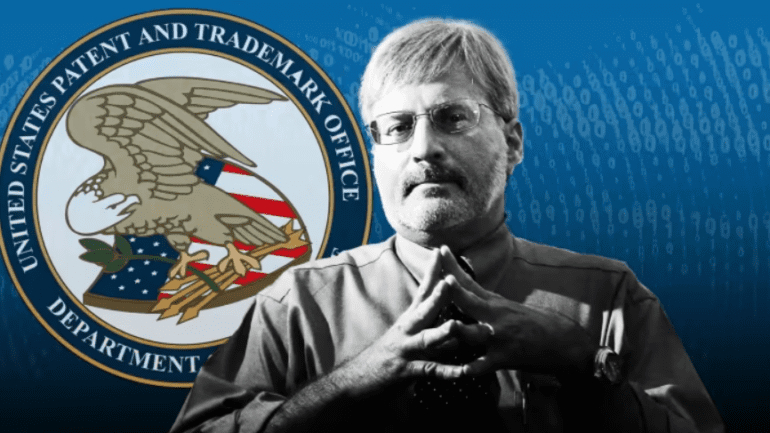TL;DR:
- Federal judge reinforces US Copyright Office’s stance that AI-generated art is ineligible for copyright protection.
- Stephen Thaler’s challenge to copyright denial for AI-generated artwork was denied.
- AI’s lack of human involvement is key in the decision.
- Copyright law is designed to safeguard human creativity and incentivize innovation.
- Copyright protection hinges on human creativity as the core element.
- Judicial precedent establishes that copyrightable works are rooted in human intellectual conceptions.
- Ongoing legal debates regarding AI companies using copyrighted content for training.
- US Copyright Office recognizes limited scenarios for AI-assisted works to qualify for copyright protection.
Main AI News:
As the writers’ strike enters its hundredth day, a new fear looms over Hollywood studios: the prospect of generative artificial intelligence taking the reins in scripting. However, established intellectual property law resoundingly declares that copyrights exclusively vest in human creators. This enduring legal stance seems unlikely to shift anytime soon.
A recent federal court ruling has upheld the stance of the US Copyright Office, asserting that artworks originating from AI are ineligible for copyright protection. The decision came as a response to Stephen Thaler’s legal challenge to the government’s refusal to grant protection to AI-generated works. US District Judge Beryl Howell, presiding over the case, emphatically declared that copyright law has never extended its mantle over creations birthed solely by technology devoid of human influence.
The driving force behind the campaign to secure copyright rights for AI creations has been none other than Thaler himself, the CEO of Imagination Engines, a neural network company. In 2018, he boldly listed the AI system named the Creativity Machine as the sole architect behind an artwork named “A Recent Entrance to Paradise.” The piece was proudly hailed as being “autonomously conceived by a computer algorithm executing on a machine.” However, the Copyright Office dismissed the application, asserting that the vital link between human cognition and creative expression forms the bedrock of copyright protection.
Thaler, asserting his ownership via the work-for-hire doctrine, mounted a lawsuit contesting the denial and the prerequisite of human authorship set forth by the office. His argument maintained that AI should be recognized as an “author” when it meets the criteria for authorship, with ownership rightly vested in the machine’s proprietor. The lawsuit contended that the office’s rejection amounted to an “arbitrary, capricious, and discretionary action, contrary to the law,” thereby contravening the Administrative Procedure Act’s provisions, which confer the right to judicial review of agency actions. The central query in this legal battle was whether a creation solely incubated by a computer could enjoy the protective cloak of copyright law.
Judge Howell succinctly addressed this query, affirming that “in the absence of any human involvement in the creation of the work, the clear and straightforward answer is the one given by the Register: No.” She emphasized that US copyright law guards solely against creations born of human ingenuity and is inherently adaptable to the zeitgeist. The core premise remains consistent: human creativity constitutes the nucleus of copyrightability, even as it finds new avenues through novel tools and mediums.
Illustrating her point, Judge Howell illustrated that while cameras mechanically reproduce scenes, such replication transpires post a human’s conceptualization of the photograph. This conceptualization involves decisions regarding the subject’s placement, lighting, and arrangements. The decisive factor is “human involvement” and “ultimate creative control” in the work’s genesis, which invariably dictates whether the creation qualifies for copyright protection.
This isn’t an isolated judicial perspective. In the renowned case of Burrow-Giles Lithographic Company v. Sarony, the Supreme Court unequivocally extended copyright protection to photographs conceived from the original intellectual conceptions of human authors. The court’s references exclusively centered on these authors as members of the human race, underscoring copyright as the embodiment of a person’s intellectual genius.
Another illustrative case involves a federal appeals court ruling that a photograph taken by a monkey isn’t copyrightable due to animals’ ineligibility for protection. Judge Howell invoked this ruling to fortify her verdict, elucidating that no precedent exists for granting copyright to non-human creations.
Delving into the purpose of copyright law, Judge Howell affirmed its mission to incentivize “human individuals to engage in” creation. Copyrights and patents, she contended, were conceived as governmental mechanisms to safeguard intellectual property, aligning with the greater good by motivating individuals to innovate. The essence of human agency in creation, and the ways to nourish this creative impulse for the betterment of arts and sciences, lay at the heart of American copyright, she affirmed. In this light, copyright law’s scope was never meant to encompass non-human entities.
This verdict arrives amidst ongoing legal debates regarding AI companies using copyrighted content to train their systems. Artists have filed suits in California federal courts, accusing these firms of copyright infringement, potentially leading to the destruction of their expansive language models.
March saw the US Copyright Office reaffirm that most AI-generated works are ineligible for copyright, but it clarified that AI-assisted creations can be copyrightable under certain circumstances. An AI-assisted work qualifies for copyright if a human’s creative input significantly shapes its final form, transforming it into an original work of authorship.
Conclusion:
The recent ruling further solidifies the notion that AI-generated creations lack the fundamental human touch required for copyright protection. Creative industries must adapt to these legal parameters, realizing that copyright law is inherently crafted to encourage and reward human ingenuity. The verdict underscores the pivotal role of human creators in the intellectual property landscape, urging businesses to navigate the delicate balance between technological advancements and the timeless essence of human creativity.

